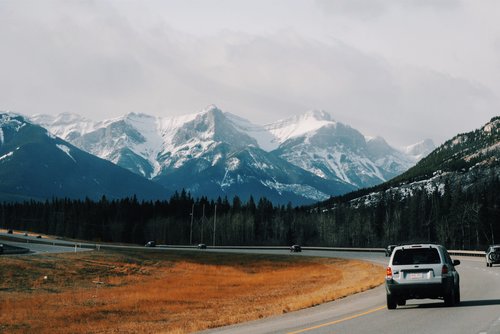One Day in Glacier Bay National Park, Alaska
I visited Glacier Bay National Park in Alaska last year in July. Of the 7 days we were on the Holland America Line cruise, Glacier Bay was the most spectacular part. The glaciers that still exist in the park today are remnants of a glacial period that began about 4000 years ago.
Glacier Bay became part of a UNESCO World Heritage site in 1979, and in 1994 vowed to work with Native American organizations to manage the area. Several thousand kilometers of the national park are a designated wilderness area.
It was a slightly foggy morning as we were cruising into Glacier Bay, and during breakfast we began to see the first chunks of ice floating past the ship. The water was very still and became a beautiful turquoise color, a sure sign of nearby glaciers.
Our first stop was Margerie Glacier where we were fortunate enough to witness ice calving. The sound is incredible! It was explained to us that the jagged looking glaciers are faster moving and the ones with a "smoother" surface are slower. Glaciers flow forward about three to six feet each day.
The ship continued on through the bay and we visited John Hopkins Glacier, Grand Pacific Glacier, Lamplugh Glacier, and Reid Glacier.
Glacier Bay is closely monitored by the National Park Reserve and poses traffic restrictions on the area. Only two cruise ships are allowed into the park per day, and only a handful of tour boats.
Several marine and land based animal species consider the bay their home. Some of these include brown bears, black bears, moose, lynx, wolves, coyotes, marmots, humpback whales, sea lions, sea otters, salmon, porpoises, and about 200 species of birds.
I feel lucky to have witnessed these glaciers. Like many glaciers around the world, Glacier Bay has fallen victim to climate change. Throughout the past 50 years Alaska's annual average temperature has increased twice as much as the rest of the United States.
I found this fact stated on the National Park Service website most interesting:
"Of the more than 100,000 glaciers in the state, 95% are currently thinning, stagnating, or retreating, and most of Glacier Bay's glaciers follow this trend. However, there are a few exceptions. Due to heavy snowfall in the soaring Fairweather Mountains, Glacier Bay remains home to a few healthy and advancing glaciers, a rarity in today's world."
These statistics reminded me of a fascinating documentary I saw a few years ago called Chasing Ice. The film follows National Geographic photographer James Balog as he documents changing glaciers in Alaska, Greenland, and Iceland for a year using specially designed time lapse cameras. The results are astounding. Go check it out!


